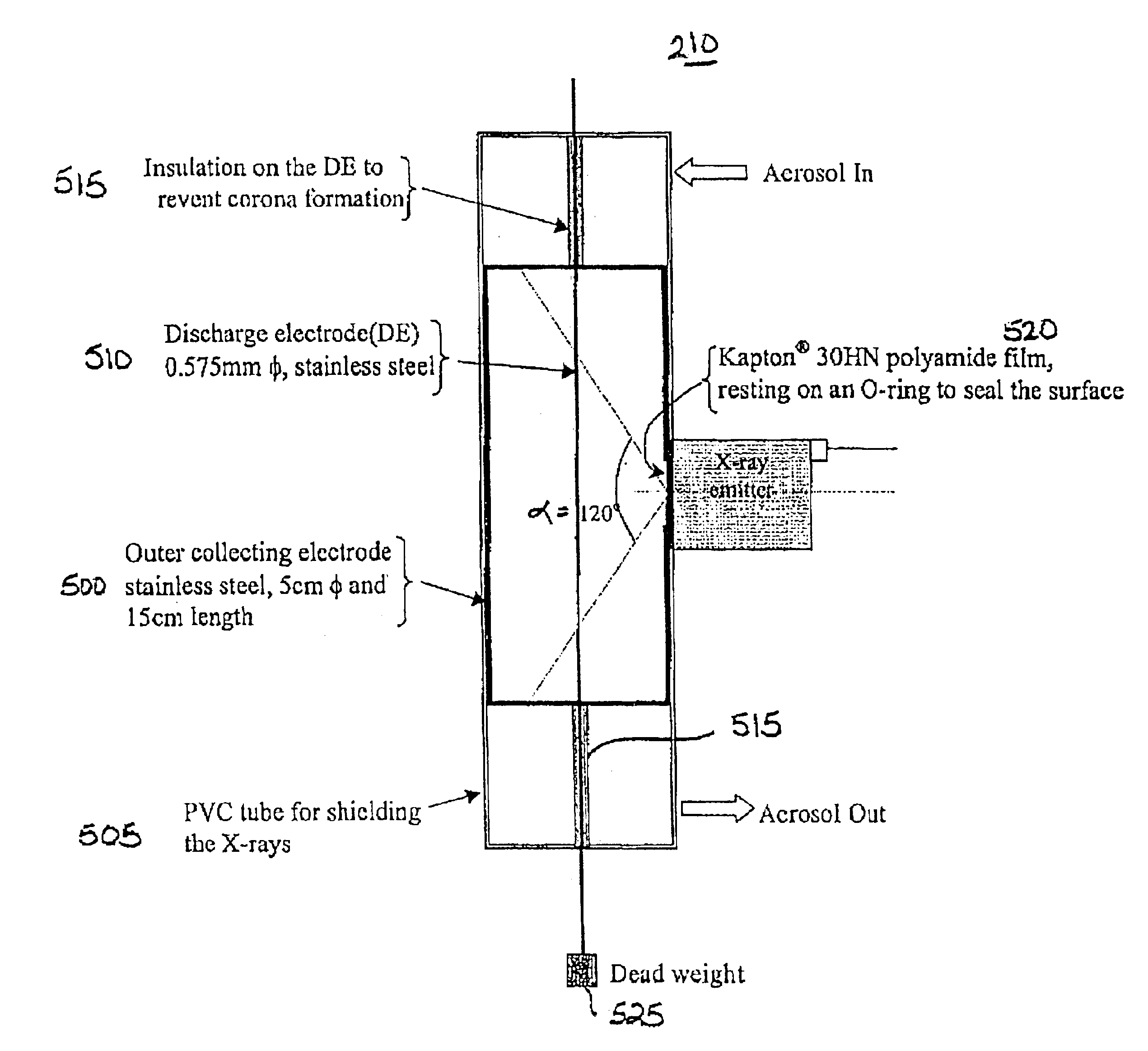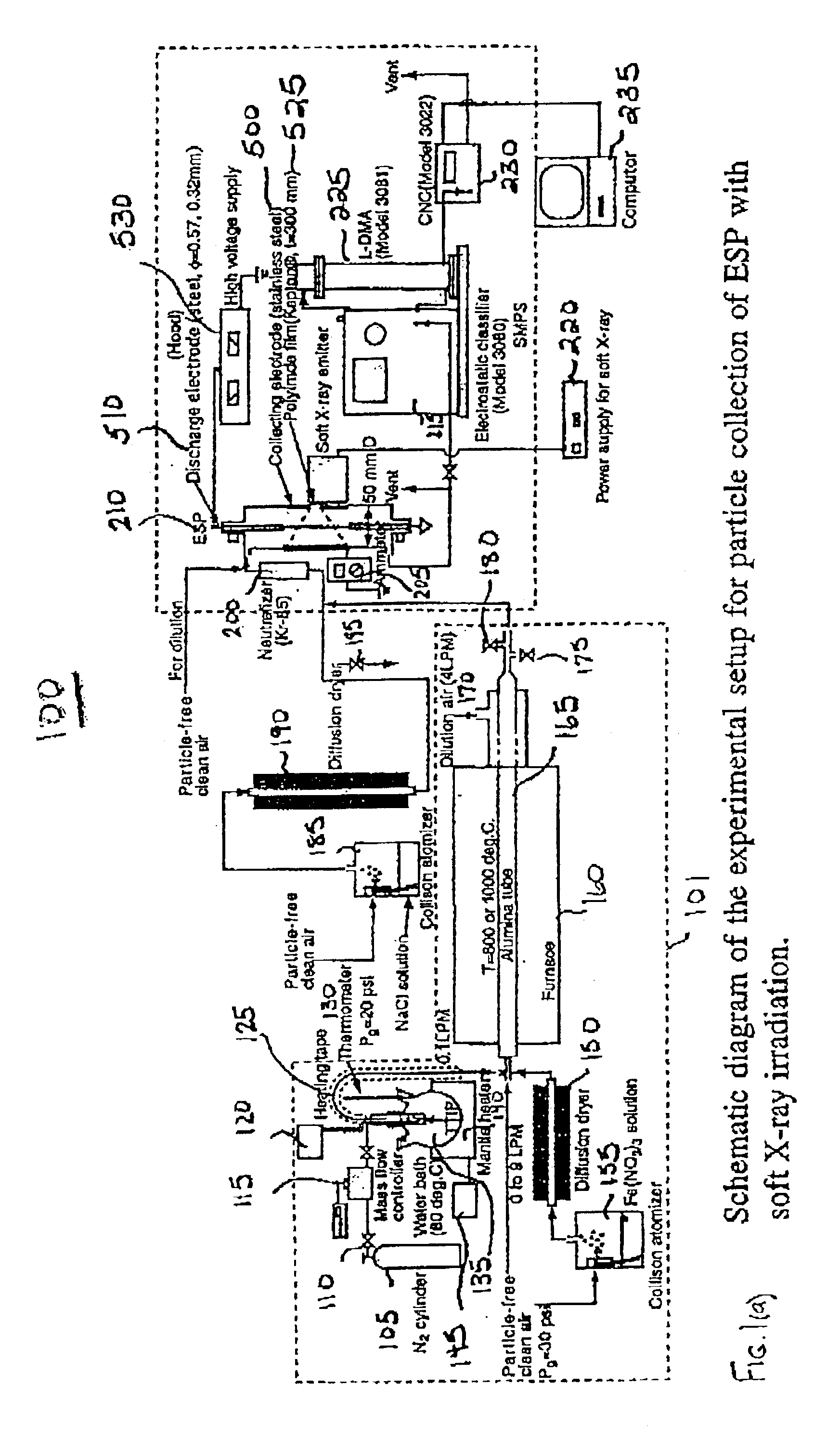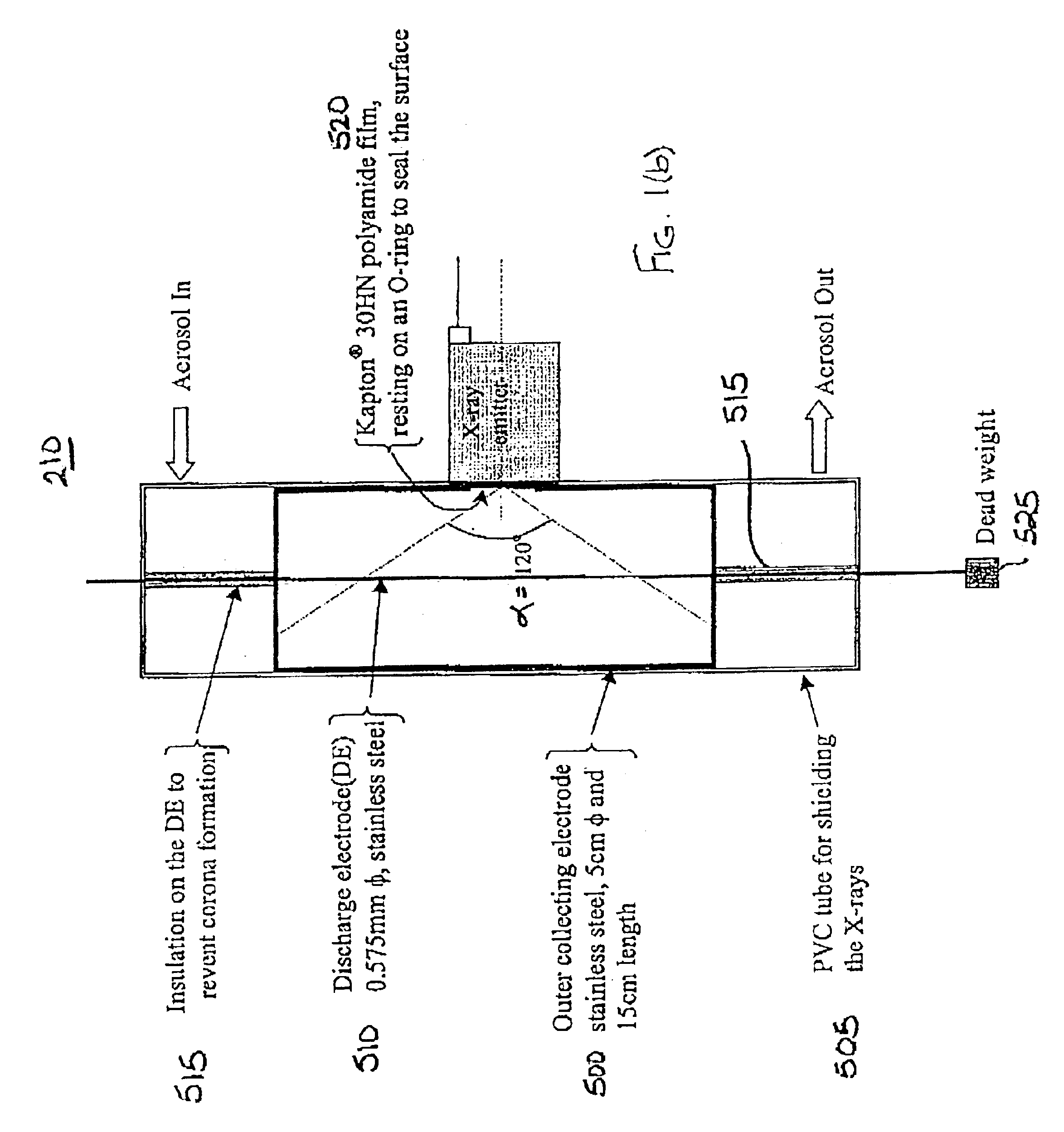Charging and capture of particles in coronas irradiated by in-situ X-rays
a technology of in-situ x-ray radiation and charging of particles, which is applied in the direction of corona discharge, instruments, nuclear engineering, etc., can solve the problems of insufficient efficiency of unipolar corona charging of ultrafine particles, long atmospheric residence times of ultrafine particles, and significant attention given to ultrafine particles in the atmosphere, so as to improve degradation efficiency
- Summary
- Abstract
- Description
- Claims
- Application Information
AI Technical Summary
Benefits of technology
Problems solved by technology
Method used
Image
Examples
Embodiment Construction
FIG. 1(a) is a schematic diagram of an exemplary system 100 to measure particle capture or collection efficiency of an ESP with soft X-ray irradiation in accordance with the present invention. Despite the fact that the particles are shown and described for illustrative purposes only as being exposed to soft X-ray irradiation in FIG. 1(a), it is contemplated and within the scope of the present invention to irradiate the particles using light at any wavelength in the X-ray spectral range. By way of example, the system shown in FIG. 1(a) is arranged for the purification of four aerosols (Fe2O3, NaCl, SiO2, and TiO2), however, any number of one or more aerosols may be purified. The particles to be purified may, but need not, include any of the four shown in Table 1(a). The exemplary size distribution parameters of the four exemplary aerosol particles tested is shown in Table 1(a).
TABLE 1(a)Size distribution parameters of aerosolsTotal particlenumberGeometric meanGeo.concentrationGenerat...
PUM
 Login to View More
Login to View More Abstract
Description
Claims
Application Information
 Login to View More
Login to View More - R&D
- Intellectual Property
- Life Sciences
- Materials
- Tech Scout
- Unparalleled Data Quality
- Higher Quality Content
- 60% Fewer Hallucinations
Browse by: Latest US Patents, China's latest patents, Technical Efficacy Thesaurus, Application Domain, Technology Topic, Popular Technical Reports.
© 2025 PatSnap. All rights reserved.Legal|Privacy policy|Modern Slavery Act Transparency Statement|Sitemap|About US| Contact US: help@patsnap.com



